Poems Provoke: U-M's Institute for Research on Women and Gender discussed Petra Kuppers’ "PearlStitch"

The cover of Petra Kuppers’ PearlStitch is provocative. It draws the eye and keeps it as the viewer takes in an open mouth and an extended lace-covered tongue with a bead of clear fluid at its tip. Her poetry is provocative, too, and after the Nov. 29 panel of University of Michigan faculty members discussing PearlStitch as a part of the Institute for Research on Women and Gender’s "Gender: New Works, New Questions" series, I knew I wanted to dive into Kuppers’ latest collection. But I wasn't unable to put my hands on a copy of the book following the reading as Ann Arbor bookstores were sold out.
Kick Out the Hams: Wild Savages' "Queen Bee" video
Do you remember the days before the smoking ban when you'd leave a concert smelling of stale cigarettes and cheap beer, and the stench would permeate your rusted-out car on the late-night ride home, lingering in your nose the next morning?
Wild Savages are the soundtrack for that drive.
The Ann Arbor trio plays bluesy proto-metal that would not have been out of place on WRIF in 1980. Think of Wild Savages as part of the 1970s Black Sabbath, Foghat, and Nazareth lineage that has produced contemporary bands like Red Fang, Saviours, and The Sword.
"Queen Bee" is the first single off the band's second album, Stagefright, which is being feted with a free record-release concert at The Blind Pig on Saturday, Dec. 16. Wild Savages goof around in the video by mugging for the camera like 1980s hair-metal bands, shotgunning beers, and playing bass on the toilet.
In other words, it's totally great.
Valerie Hegarty's "American Berserk" exhibit deconstructs the gloss of U.S. history

Brooklyn-based artist Valerie Hegarty is known for site-specific installations. For her American Berserk exhibit in the University of Michigan’s Institute for the Humanities Gallery, Hegarty created a rotting watermelon -- which isn't to say she saw the space and thought, "Hmm, this room screams, 'EXPIRED FRUIT.'" Rather, Amanda Krugliak, curator for Institute for the Humanities, suggests Hegarty’s works “speak to the morass, the schism, the cracked facade, and fruit rotten, the flowers drooping.” The tradition of representing fruit on the brink of putrefaction is long established.
Krugliak has also included a variety of sculptures by Hegarty that engage with American iconography, calling it into question and raising suspicions about the stories America tells about its past.
U-M’s event announcement suggests Hegarty has consistently engaged with “fundamental themes of American history and particularly the legacy of 19th-century American art, addressing topics such as colonization, slavery, Manifest Destiny, nationalism and environmental degradation.” Hegarty frequently employs images of George Washington, a symbol of American values, and an excellent example of how American history often glosses over unsavory aspects of its founding fathers’ lives.
The interesting thing about Hegarty’s vision, as Krugliak points out, is that “each work feels steeped in a brew of our collective history, an archive of distorted, iconic American imagery.” While Hegarty’s work represents this familiar American imagery, the icon is always altered. Krugliak gives the example of this alteration, stating that Hegarty’s “seashells and clipper ships begin to morph, strangely animat'ed, sliding to the floor.” The warped seashells are reminiscent of Salvador Dali's work, but as Krugliak suggests, these works are in context of “modern-day folly.”
In her artist’s statement, Hegarty labels the installation process a form of “reverse archaeology,” in which the gallery is transformed by adding and subtracting layers of paint, paper, and epoxy to create a “material memory of a space.” Material memory in relation to space within a museum or gallery setting is already implicit: it is shifting constantly. Hegarty’s frequent employment of stylistic references to early American art in her installations frankly reference and destroy the illusion of reality portrayed by museums, particularly in display practices of American art.

Hegarty employs a multitude of materials in the creation of her sculptures and installations. She has used ceramics (much of the work in the Humanities Gallery is ceramic), wood, paper, and epoxy. One of Hegarty’s signatures is playing with dimensionality and the discrepancy between a flat surface and a 3-D or 2-D object. This generally starts with the idea of the “flat” painting being projected forward into space, sliding off the wall, or apparently melting. In the Humanities’ Gallery, the most striking example of Hegarty’s signature installations is the jutting, 3-D, site-specific sculpture representing George Washington. George is also found represented in modestly sized ceramic topiaries, in which his features are distorted yet recognizable.
Hegarty's title of the show, American Berserk, is a nod to Philip Roth’s Pulitzer Prize-winning novel, American Pastoral. Roth defines the Berserk as the inverse of the American pastoral ideology. This installation is a “restaging” of the original show that contained these works, held at Burning in Water Gallery in New York, 2016. On her website, many of the works can be seen as they were in the 2016 installation. These images on her website illustrate the differences in each site-specific work. For example, in both 2016 and 2017 she created the George Washington painting, which a tree branch extending from the wall is impaling. The branch simultaneously punctures the “canvas” and becomes an extended nose, referencing Pinocchio, the liar, suggesting the iconic founding father’s wrongdoings.
Additionally, the installation at the University of Michigan’s Humanities Gallery differs from the original in that it appears more dramatic, the branches appearing to have done more damage to the wall. Though the artist’s intervention in the space is not as grand as some of her past installations, the work of art disrupts the normative gallery space. This, paired with the unsettling nature of the works themselves, creates a critique not only of American history and early American art but the practices continuously embraced by museums in displaying these works of art.
Elizabeth Smith is an AADL staff member and is interested in art history and visual culture.
Valerie Hegarty's "American Berserk" is on display at University of Michigan’s Institute for the Humanities Gallery, 202 S. Thayer, through Dec. 21. Gallery hours are Monday through Friday 9 am to 5 pm. Free. For more information, visit ns.umich.edu.
All in the Family: Saxophonist Peter Formanek's senior recital
Peter Formanek is a 22-year-old saxophonist who is about to graduate from the University of Michigan's School of Music, Theatre & Dance with a Bachelor of Fine Arts degree.
But he's been studying music with a Ph.D.-level teacher his whole life.
His father, Michael Formanek, toured with giants like Tony Williams and Joe Henderson when he was still a teen in the early 1970s, and he went on to play with Freddie Hubbard, Gerry Mulligan, Stan Getz, Tim Berne, and Fred Hersch, among many others. He also records as a leader for ECM Records, one of the greatest jazz and classical labels ever.
As the younger Formanek mentioned at Love Songs, his senior recital on Monday, Nov. 27, at Kerrytown Concert House, there were always great musicians coming over to his family's home in Baltimore, Md. As he said while introducing his father, who joined him for the evening's final song, "I'm going to call up my dad, who is not only the person responsible for getting me into music but also giving me so many musical opportunities and access to all these really, really amazing musicians that I've been able to be around my entire life."
Formanek live-streamed his recital, which is archived on YouTube. (There will also be a high-quality edited version with audio from the board.) Below you'll find the list of musicians who joined him and the set list, which includes songs by Charles Mingus and Wayne Shorter, along with four Formanek originals -- three by Peter and the set closer by his dad.
It's De-Lovely: "Anything Goes" at Encore Theatre
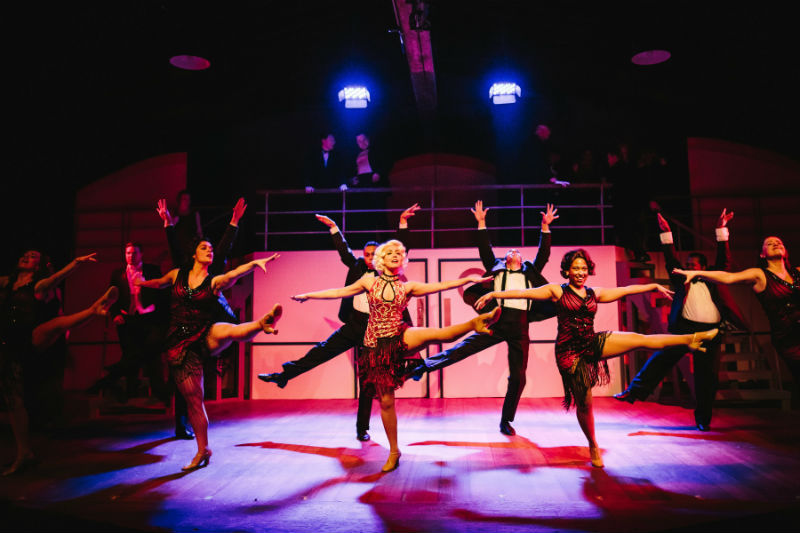
“Tap Your Troubles Away” isn’t one of the songs featured in the screwball musical comedy Anything Goes, but it’s nonetheless what popped into my head upon leaving Dexter’s Encore Theatre on Sunday.
Why? Because this silly confection of a Depression Era, vaudeville-infused musical, jam-packed with wordplay and witty Cole Porter tunes, offers a pleasurable, two and a half hour escape from our increasingly stressful world.
Originally staged in 1934, with a new book by Timothy Crouse and John Weidman (original book by P.G. Wodehouse and Guy Bolton, and Howard Lindsay and Russell Crouse), Anything Goes tells the story of Wall Street broker and ladies’ man Billy Crocker (Sebastian Gerstner), who stows away on his boss’ cruise liner upon spotting the woman he truly loves, heiress Hope Harcourt (Emily Hadick), on board with her British fiancee, Lord Evelyn Oakley (David Moan). Hope’s family suffered great losses during the Crash of ’29, so her engagement is more pragmatic than romantic, and her heart secretly belongs to Billy. Meanwhile, brassy nightclub singer Reno Sweeney (Olivia Hernandez) only has eyes for Billy, too, but over time, an unlikely friendship grows between her and Oakley.
Oh, and there’s a scheming, wisecracking gangster-in-hiding (Moonface Martin, played by Dan Morrison) and his moll (Erma, played by Elizabeth Jaffe) because isn’t there always? Some featured Porter songs in the show (besides the title number) include “I Get a Kick Out of You,” “You’re the Top,” “It’s De-Lovely,” and “Blow, Gabriel, Blow.”
The latter number is one of the production’s best and most extensive showcases for Rachel Constantino’s joyous choreography, the other being the first act's energizing closer, “Anything Goes” -- which, amazingly, winks at one of the biggest dance men of the show’s era, Busby Berkeley, in its patterns and formations, despite the Encore’s relatively tight space limitations.
But the big, splashy, “tap-gasm” (my term) numbers weren’t the production’s only highlights. “The Gypsy in Me” comes off as both hilarious and sexy, with Moan and Hernandez turning up the fizzy flirtation factor through Constantino’s cheekily sensual choreography; “Buddie, Beware” has Jaffe literally rolling in men; and in “Friendship,” Hernandez and Morrison break the fourth wall by acknowledging that they can’t keep musical director Tyler Driskill vamping forever while they neurotically commiserate and kvetch about various things.
These moments epitomize the Encore production’s polished, sophisticated breeziness, as established by director Thalia Schramm, who keeps the pace clicking without ever making the scenes feel rushed. Plus, Schramm subtly, wisely downplays the culturally cringey parts of the show -- namely the often-exaggerated depiction of a reformed Chinese gambler -- while still honoring the script. Now, how one man’s outfit comes to disguise two characters, well, that’s the kind of musical theater math you have to just roll with.

Driskill’s seven-person orchestra delivers Porter’s glamorous score with panache, and the ensemble sounds divine. Tyler Chinn’s lighting design helps bring out the romance and heat of certain numbers, while Kristen Gribbin’s versatile sets, paired with Anne Donevan’s props, help to visually transport us to the SS American while also allowing for seamless, quick transitions. Finally, Sharon Larkey Urick’s handsome costumes manage to be bewitchingly sexy without being tacky, with Hernandez sporting the production’s most gorgeous gowns.
But Urick’s dresses are only one reason it’s hard to pull your eyes from Hernandez whenever she’s on stage. The charismatic actress commands the stage with a winning charm, and her knockout vocals have an effortlessness that’s only achieved through hard work and discipline. Gerstner is a delightful, graceful, and appealing leading man, and Morrisson and Jaffe have a ball with their deliciously cartoonish supporting roles. One of the most impressive leaps, though, is achieved by Moan, who takes the stuffy straight man role and renders it hysterical by seizing upon every opportunity -- like Oakley’s fascination with American colloquialisms, for instance, or his penchant for dancing around in a short robe and sock garters (courtesy of Urick) -- to wring humor from the character, and thus make Oakley more interesting.
Of course, there’s no mistaking that Anything Goes is a show built around the music, not the other way around; and with its absurd plot, cornball humor, and broad characters, the musical is more about making audiences feel good for a couple of hours than it is about making them feel much of anything else.
But these days, I’ll happily take that.
Jenn McKee is a former staff arts reporter for The Ann Arbor News, where she primarily covered theater and film events, and also wrote general features and occasional articles on books and music.
"Anything Goes" runs through Dec. 23 at The Encore Theatre, 3126 Broad St., Dexter. Showtimes: Thursdays, Fridays, and Saturdays at 7:30 pm and Saturdays and Sundays at 2 pm. Visit theencoretheatre.org for tickets and more info.
Look Deep: John Lilley's “Wandering Around … in black and white” at Kerrytown Concert House
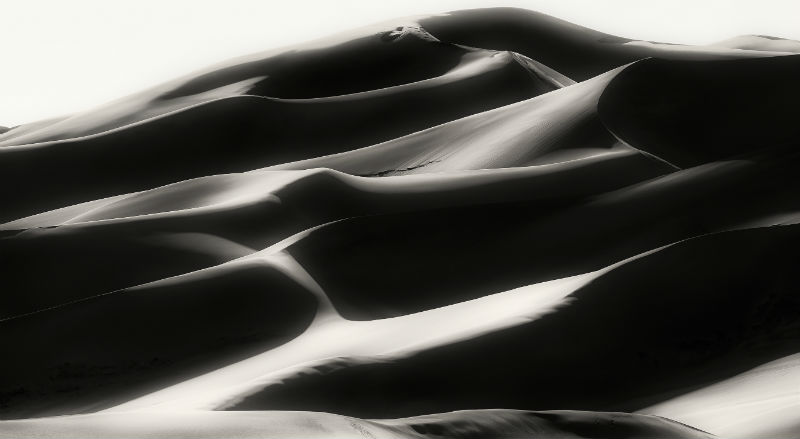
We last saw John Lilley’s photography at the Kerrytown Concert House in June 2012. His John Lilley Photographs exhibition found the Dexter photographer using digital color notable for its exhilarating chromaticity as well as its remarkable penchant for detail.
“Simply put,” said Lilley at that time, “I make photographs because I see photographs.”
But as he later tellingly added in that statement, “I’m rarely attracted to the 'big picture.' Rather, my vision is almost unconsciously drawn to distinct designs, textures, and forms that occur as small subsets of the broader landscape. I’m fascinated by the myriad possibilities for abstract composition that exist in our world.”
All of which is to say that Lilley’s current Wandering Around … in black and white shows us that his monochromatic photography is easily the equal of his color work. Indeed, if anything, Lilley’s photographic self-discipline is as much (if not more) vivid than his color art.
The work in this exhibit dates back to the 1970s, from using old-school analog photographic technology right up through contemporary digital work recently executed. None of the photos are dated, which creates a chronological ambiguity that forces the viewer to focus on the art rather than try to trace Lilley’s artful development. This strategy effectively makes each work an equal among equals.
As he says in his most recent gallery statement:
The American Road Trip is, for me, the activity of simply wandering from place to place. I’m not sure if the road trip is an excuse for photography, or if photography is my excuse for the road trip. Whichever it is, the traveling about is an opportunity to see what’s out there, to discover new places and the things that inhabit those places and spaces. When I’m on the road with my cameras I’m totally focused on the undivided landscape. I try to see into that landscape as deeply as I can.
Right said: What’s best about this self-description is that this “seeing” is precisely what Lilley does best. And how he sees -- as much as what he sees -- is what makes his exhibition a superior display of art.
This may be because black and white images tend to appear ageless. There’s often a subtle chiaroscuro tincture that ironically reveals more nuance than the color we would normally see around us. This monochromic shading makes it difficult to date the work because of the composition’s play of light and shadow.
As such, black and white photography is often more dramatic than color photography because of this psychological remove. There’s a nebulous gravity running through the photographs in Wandering Around in Black and White that contrast heartily to the vibrant color patterns of Lilley’s color photos.
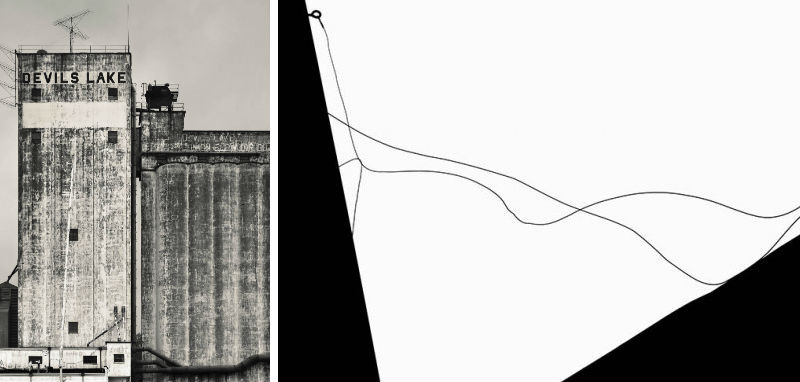
Likewise, it’s interesting that one of the more stunning works in the 25 photographs on display is magnificently large-scale if there ever was a “large-scale.” Because for someone who says he’s not looking for the “big picture,” Lilley’s Devils Lake, North Dakota sure looks big enough.
Photographing an aged building next to a silo, Lilley’s Devils Lake is simultaneously a big picture and nuanced study. Shrewdly referencing a touch of early 20th century American Precisionism, the aged architectural structures in the photograph have a gritty integrity that can’t be missed. Lilley expertly captures these structures rectilinear façade with its complex horizontal and diagonal gradation to illustrate each striated scuff that marks its history.
On the other hand, Lilley statement implicitly references “road trips” and other such places --
and what could be more other than landscape photography? His Sand Dunes, Early Morning: Great Sand Dunes NP, Colorado certainly fits this bill. A striking crosswise depiction of nature in its harsh environment, his depiction of this national park is surprisingly serene for such a terrain.
The vista is grandly impressive -- and there can be no denying this fact -- yet Lilley’s judgment softens the environment’s austerity through the adroit manipulation of light and shadow. Really no more than a series of receding sand dunes whose alternation of light and dark creates an internal harmony of visual alliteration, Sand Dunes, Early Morning's interspersed rhythmic contemplation carries the viewer’s eye well beyond the desert horizon.
Yet perhaps the hardest trick for any art photographer using black and white is to craft silhouettes of such a sharp disparity that the precise tonal juxtaposition supplies the entire information one needs to take the measure of the composition. Lilley’s Wires: Concordia, Kansas is easily the masterwork in the exhibit for this reason.
Wires features a black and white contrast that’s startlingly pure in its monochrome articulation. As inspired as it is spare, two supporting triangles (of whatever origin) suspend a tangle of irregularly coiled curvilinear wire through an eye hook bolt in what amounts to a compositional limbo. Lilley dispenses with any semblance of depth in favor of a paradoxical black and white curvilinear and rectilinear abstraction whose precise difference lets the work’s geometric elements hover on the photograph’s foreground. It’s a satisfying inner tension that allows his viewer’s eye to wander as restlessly as does his camera.
John Carlos Cantú has written on our community's visual arts in a number of different periodicals.
John Lilley's “Wandering Around … in black and white” runs through Dec. 3 at Kerrytown Concert House, 415 N. 4th Ave, Ann Arbor. The exhibit is available 9:30 am-5 pm, Monday-Friday, during public concerts, and by appointment. For information, call 734-769-2999 or visit kerrytownconcerthouse.com.
Synthesize Your Life: A wrap-up of Mini MoogFest 2017
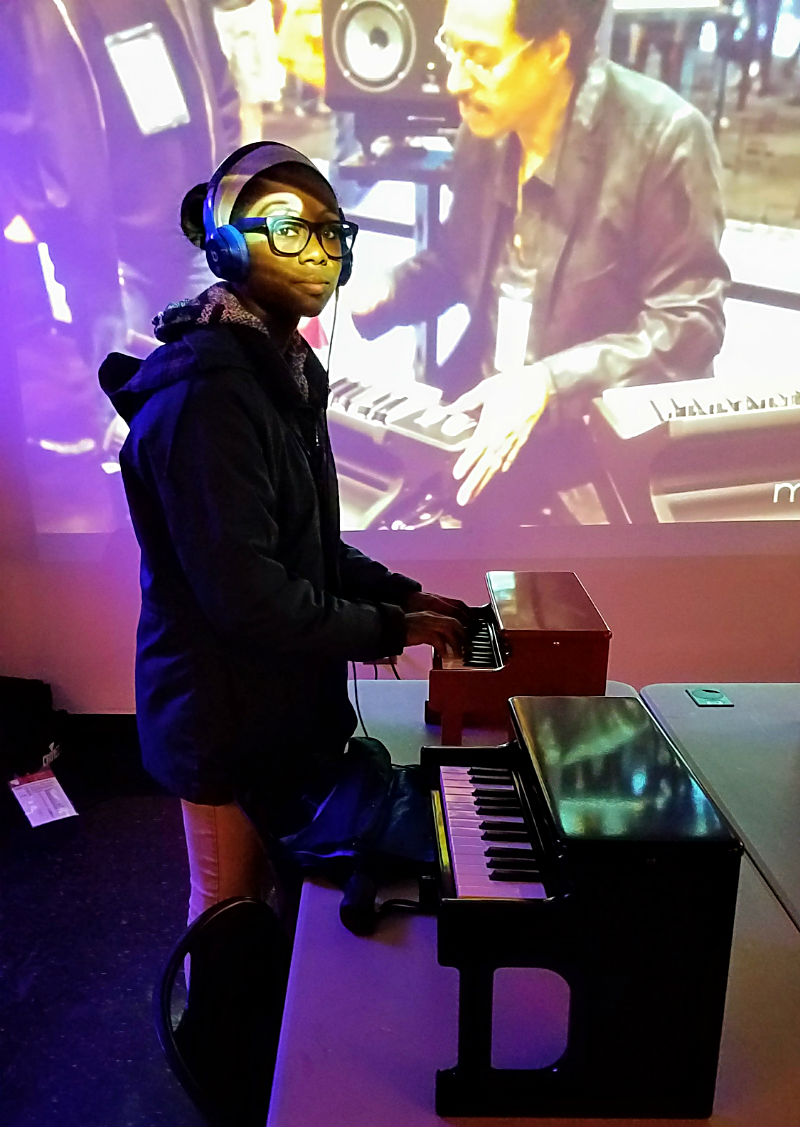
If we Ann Arbor District Library staffers were excited synthesizers, we'd be whooping with pitch-bent, major-key oscillations from the joy Mini MoogFest 2017 brought us. Our third annual iteration of this event greatly expanded upon our two previous offerings, and we had a fully packed house at the Downtown Library on Saturday, Nov. 18. Librarians on the scene estimated that over 350 people -- including around 75 kids -- made their way through Mini MoogFest, where they built synths using littleBits, played around with AADL's Music Tools, and enjoyed live performances from area electronica artists. Below is a roundup of photos, videos, and social media posts covering Mini MoogFest 2017.
Midwest Meditations: Cal Freeman, "Fight Songs" at Literati

“This is a lot of people for a poetry reading," said writer Cal Freeman. "I’ve read for three people before.” On Nov. 11, Michigan poet Freeman read from his new book, Fight Songs, at Literati bookstore. The crisp November evening seemed perfect for listening to regionally focused poetry as the temperature made its way downward.
Freeman is the kind of poet I would have spent a semester in a creative writing class peeking at over a copy of the latest student work being workshopped. He’s tall, though not quite lanky, and was dressed in mostly gray. I wouldn’t describe his look as rumpled, but the word crossed my mind. Very Midwestern.
She's Picking Up Good Vibrations: Lynn Comella, "Vibrator Nation" at Literati
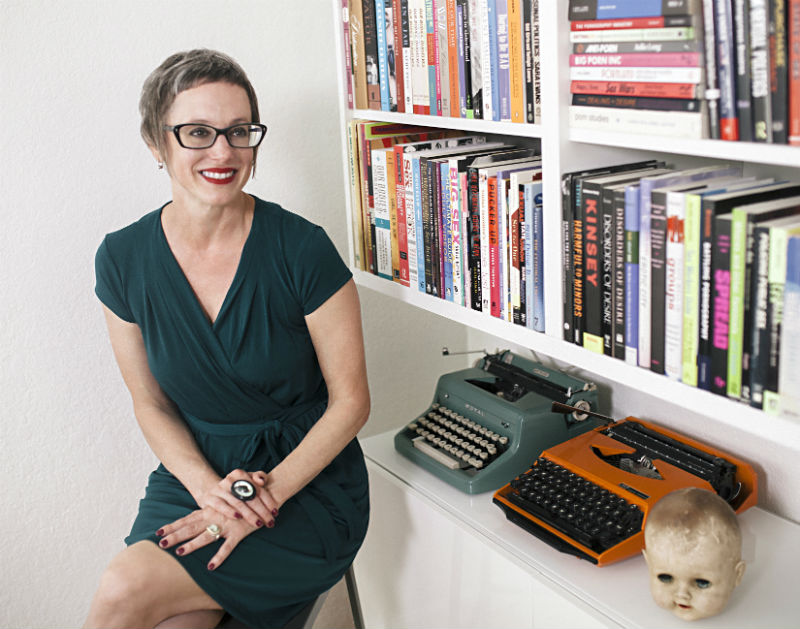
When it comes to other adults’ sexual choices, I’m very live and let live. And in my personal life, I’m very willing to make a joke or tell a story laden with sexual innuendo, and I’ve long ago accepted that I’m the person who will robustly fall face-first into a strange double-entendre, I found myself a bit shy at the bookstore when I purchased my copy of Lynn Comella’s Vibrator Nation in advance of attending her discussion of the book which took place on November 14th at Literati.
This book was based on more than 80 in-depth interviews with sex-toy shop owners, employees of said stores, and pornographers. Comella herself worked at Babeland in New York City, which provided her ethnographic access from both sides of the sales counter. Her book synthesizes this and examines the role of feminist sex-toy stores on the larger adult industry.
Why study sex-toy shops?
Comella knew to answer that question for the audience right away.
It turns out that this project began as a part of her graduate coursework. She had taken a field methods class in cultural studies and had an interest in sexual politics. The class required her to conduct a small-scale ethnographic project. She asked herself, "Where are the places that women can be sexual subjects as opposed to sexual objects?" As a part of her work, she spoke with Aileen Journey, the owner of a store called Intimacies, which had just opened in the town where she studied. The owner told Comella that she saw her store as a feminist way to empower women and that she had modeled her store after Good Vibrations, a store that had opened in the 1970s in San Francisco’s Mission District.
Good Vibrations shared the idea that sex education could be empowering and helped Journey on the road to establishing her own store. This help included selling a vendor list for a mere $50 -- such magnanimity is an anomaly in the business world. But it turns out that this, as Comella calls it, “non-competitive ethos” was a reason why some saw the businesses as activism.
In 2008, there was a shift in the adult store industry. According to Comella, before this point, the industry had catered to the perceived desires of stereotypical men. She argues that 2008 was a game-changer due to both the recession and also the proliferation of free Internet pornography. Suddenly, the women’s market became appealing, as it was a rare growth area in the industry. Comella, however, became interested in the history of this already growing market, which had been building since the early 1970s.
Comella read from a chapter in her book titled “Living the Mission,” where she talked about the lived experience of working at Babeland. Here, she says, “Every shift I worked at Babeland put me on the front lines of its mission, which was ‘to promote and celebrate sexual vitality by providing an honest, open and fun environment, encouraging personal empowerment, educating our community and supporting a more passionate world for all.’”
Feminism provided a healthy dose of friction inside of this passionate world. For example, early on, men weren’t allowed into some of these spaces. Joani Blank of Good Vibrations, however, recognized that not all men were comfortable in the more traditional shops and that her store was appealing to some men. These business owners, then, were forced to decide whether or how to include men. Feminism also complicated things, raising the question of how erotic videos fit into the equation. How does one respond to such a market demand when some of the feminist thought behind these shops was anti-pornography? How do shops adjust to the construction of feminism, how do they embrace intersectionality? How do they become trans-inclusive? How do these businesses remain responsive?
There was also the matter of what sort of bedfellows feminism and capitalism made. Some individuals felt that a store, a capitalist enterprise, was antithetical to feminism. Others feared that once the market for women-centered sex shops became viable it would be co-opted and would no longer be about empowerment, liberation, and education. Babeland faced this matter head-on. The store had sold shares to its employees, yet the management still felt like profits weren’t as important as the social work that they provided. The employees, now owners, disagreed.
Comella argues that it’s “easy to think about sexuality as something we own,” but larger forces that act upon sexuality, such as cultural norms and public policy, impact it.
In the Q&A portion of the evening, the audience’s questions pushed at the larger cultural forces. Economic class factored in, as Comella acknowledged. For instance, finding body-safe materials from ethical sources sometimes priced-out certain consumers. She also acknowledged that within the field that storeowners talk a great deal about gender equality and sexuality, but not as much about class or race. This presented her with a challenge; it’s difficult “to write about things people aren’t really talking about.”
In examining this segment of the adult industry, Comella answers many questions about the rise of the business and the circuitous paths that female and queer-friendly sex-positive sex-toy stores have taken. She also begs the question of what happens next within this dynamic trade.
Sherlonya Turner is the manager of the Youth & Adult: Services & Collections Department at the Ann Arbor District Library. She can be found diving headfirst into all sorts of projects over at sherlonya.net.
Glowing Highlights: Laverne Cox at U-M's Center for the Education of Women symposium
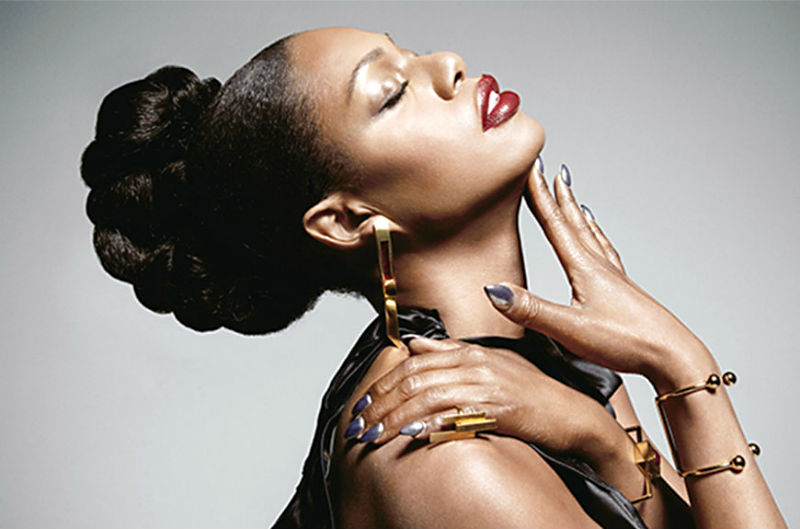
When Orange Is the New Black's Laverne Cox walked out onto the Rackham stage, my immediate thought is that she is even more beautiful in person than on screen or in photos, and I don’t exactly understand how this is possible. She looks as though the sun is shining directly on her. I think maybe this is what actually mastering the art of highlighting looks like, but I’m also sure I could put on all the makeup in the world and I would still never look like that.
I’d like to say that as soon as she started speaking, all such frivolous thoughts left my head, but frankly, that would be a lie. I did settle in with the rest of the sold-out crowd that has come to see her as the keynote speaker on Nov. 15 for the 2017 CEW Spectrum of Advocacy & Activism Symposium put on by the Center for the Education of Women at the University of Michigan, and for the next hour and a half, listened to a great (if slightly scattered) talk that encompassed gender and race theory, her life story, and how the Ann Arbor community should respond should white supremacist Richard Spencer come to campus.
Cox opened her speech with an emotional acknowledgment of the standing ovation she was met with when she walked out on stage: "To see a whole room of people standing, applauding for a black transgender woman? I don't know, it still feels revolutionary." And it did to me, too, to see a whole room of people react to her speech as though they were in church, clapping and snapping along to her powerful words. The crowd was extremely diverse and I was moved to see so many folks of all ages, races, and genders listen so intently to Cox without questioning her right to speak.
Cox titled her talk “Ain’t I a Woman,” after Sojourner Truth’s famous 1851 speech at the Women’s Rights Convention. White Americans have manipulated, exploited, and questioned the womanhood of black women since the day our country was founded, and now cis Americans do the same to trans women. Cox described how she, like Sojourner Truth before her, has been told that she isn’t really a woman, then executes a perfect hair flip and asked, “And ain’t I a woman?” The crowd went wild. The applause kept coming as Cox seamlessly transitioned from bell hooks to Cornel West to Judith Butler. I was trying to keep a list of every academic she mentioned and I wrote so fast that my hand cramped. I also had to ask my seatmate to borrow extra paper.
In recounting her life’s story, Cox told one particularly disturbing tale of her third-grade year, in which her teacher warned her mother that if she didn’t act soon, Cox would “end up in New Orleans wearing a dress.” Following this, Cox was forced to see a therapist who suggested injecting her prepubescent body with testosterone to make her more masculine. Luckily for Cox, her mother rejected this proposal, but that didn’t stop her childhood from being riddled with bullying, a church that branded her a sinner, and a suicide attempt at only 11 years old. Cox said she was lucky to get an excellent education and escape the violence of her youth. This is not, however, the experience of most trans women of color, a point that Cox was quick to make. She reminded the audience that 2017 has been the deadliest year on record for transgender Americans, and trans women of color are hit the hardest by this violence.
Despite this upsetting truth, Cox seemed genuinely hopeful about the future. She argued for bringing people into conversations rather than calling them out. Cox truly seems to believe in finding the humanity in everyone, although when asked about Richard Spencer’s possible visit to the University of Michigan campus, she was clear that certain beliefs and behaviors couldn't be tolerated. She stated that her current focus is on voting rights and working against gerrymandering. She implored the audience to “vote, vote, vote,” and she left us with the advice, “Stay woke and stay strong!” At that, the crowd rose as one to clap. Cox did one more hair flip, then turned and walked off stage, leaving behind some of the sunshine that she brought in.
A (partial) list of the scholars, artists, and activists Cox referenced in her speech:
Simone de Beauvoir
Brené Brown
Judith Butler
Ava Duvernay
Johan Galtung
bell hooks
Jen Richards
Angelica Ross
Sojourner Truth
Cornel West
Evelyn Hollenshead is a Youth Librarian at the Ann Arbor District Library.


































